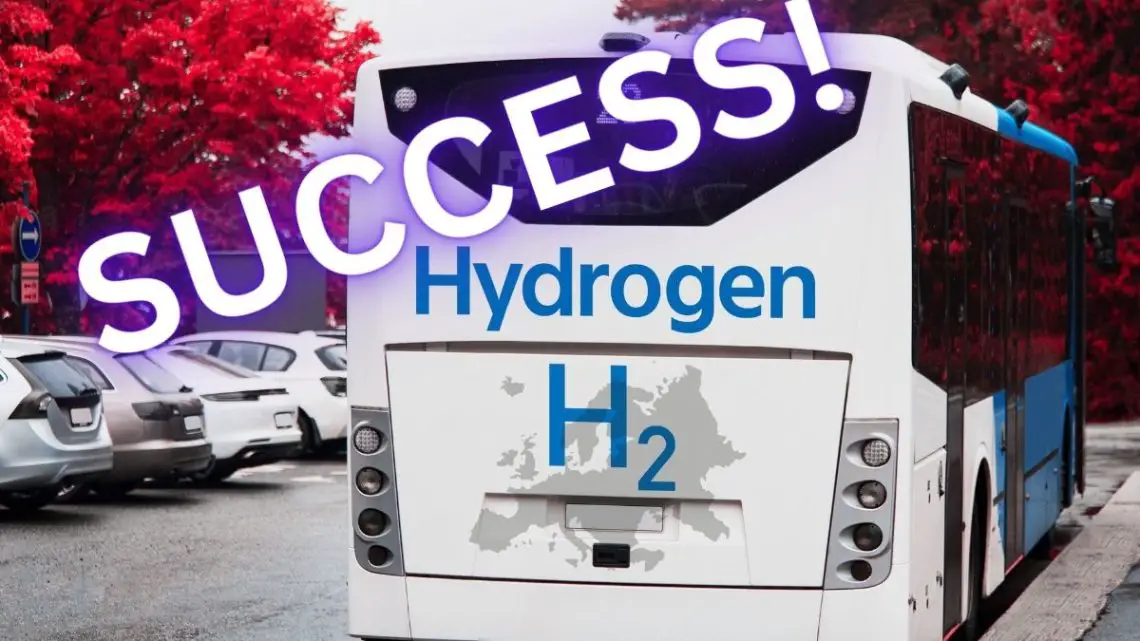
JIVE completes first stage of hydrogen buses project and it’s a success
August 5, 2024JIVE continues on in Europe, but the flagship project has wrapped up.
The Joint Initiative for hydrogen Vehicles across Europe (JIVE) has successfully completed JIVE1 by deploying 131 hydrogen buses in the continent. Through the major fuel cell bus project, H2 buses have been rolled out in the UK, Germany, the Netherlands, and Italy. The completion of this first project is a significant step toward making sustainable city public transport a reality in Europe.
The JIVE1 project achieved several key milestones.
JIVE 1 kicked off in 2017 with the goal of deploying 131 zero-emission hydrogen buses as well as the necessary infrastructure required to support this transportation.
Throughout the flagship project’s run – co-funded by the Clean Hydrogen Partnership – it accomplished a series of important milestones. Among these included:
- More manufacturers participating in the project by its end, with multiple bus models now available compared to when JIVE1 first started.
- The first fleets of double-decker fuel cell buses were developed and became operational.
- The project managed to make hydrogen buses more economically viable by achieving its goal of €650,000 ($709,536) for a standard 12m bus across all sites.
- The buses managed to maintain a consistent range of up to 500 km (310.6 miles) in various climate conditions, showcasing flexible and reliable zero-emission performance.
- The buses beat the initial fuel consumption targets, achieving very low values of 6.5 kg/100km (/62 miles). This improved fuel efficiency, further bolstering the economic case for fuel cell technology.
Making hydrogen buses a practical reality.
Other significant achievements resulting from the project are that a greater number of operators now have practical experience in deploying and running hydrogen buses in standard operations. Additionally, agreements with suppliers of buses and hydrogen fuel were established for operations all the way up to ten years.

Moreover, due to the various site visits, presentations, publications and bus user group meetings that took place throughout the run of JIVE1, there has been extensive knowledge sharing.
“The JIVE1 project has made a major contribution towards advancing Europe’s fuel cell bus sector,” said Michael Dolman, Partner at ERM (JIVE project coordinator). “Many lessons have been learnt that are highly relevant for public transport authorities, operators, and others with an interest in hydrogen in mobility applications.”
JIVE2 will carry on until June 2025.
 Although JIVE1 has reached its conclusion, the joint initiatives second project, JIVE2, will continue to run until June of next year.
Although JIVE1 has reached its conclusion, the joint initiatives second project, JIVE2, will continue to run until June of next year.
JIVE 2 has been underway since January 2018 and is expected to deploy over 100 more hydrogen buses. Between JIVE1 and JIVE2, the goal is to deploy almost 300 fuel cell buses in 22 cities across Europe. It will be the largest deployment of H2 buses in the continent to date.



 With over 15 years of reporting hydrogen news, we are your premier source for the latest updates and insights in hydrogen and renewable energy.
With over 15 years of reporting hydrogen news, we are your premier source for the latest updates and insights in hydrogen and renewable energy.